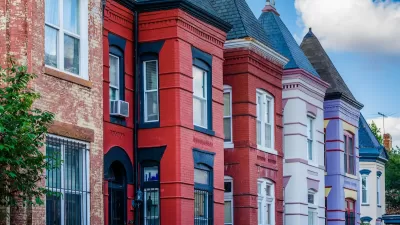The way we design cities affects housing costs differently than you might think.

As more of the world becomes urbanized, Cem S. Kayatekin and Lorenzo Uribe Sanmiguel argue that the way we build cities and “urban form” can have a dramatic impact on housing affordability, livability, and economic development.
The authors make a distinction between bottom-up and top-down development. “Today there are extensive discussions of bottom-up development and how it fosters communities and neighbourhood identity, while the lasting imprints of top-down regimes are still clearly visible in contemporary cities around the world.”
The debate over whether bottom-up or top-down systems are more inclusive and fair persists: proponents of bottom-up approaches see value to the organic development of different forms, while supporters of top-down development assert that uniform systems are more efficient.
Using case studies from Barcelona and Madrid, the authors discovered that “our research both confirmed and subverted the presumed theoretical link between urban form and housing stock, and the presumed supremacy of bottom-up over the top-down areas in fostering economic diversity.”
The study found that bottom-up areas did contain more small and affordable housing units, but that this was largely due to smaller plot sizes. “Older bottom-up areas seem to naturally lend themselves to having more small-scale plots. This is likely due to the incremental development of these areas, and the complex land ownership patterns that developed as a result.”
The broader implication for the housing crisis is that encouraging more small-lot development can boost supply and improve affordability. “What our research indicates is that deeper, more structural approaches may be worth considering – approaches that not only address the physical form of the city, but also the ownership patterns that underpin it.”
FULL STORY: “Urban form” and the housing crisis: Can streets and buildings make a neighbourhood more affordable?

Planetizen Federal Action Tracker
A weekly monitor of how Trump’s orders and actions are impacting planners and planning in America.

Congressman Proposes Bill to Rename DC Metro “Trump Train”
The Make Autorail Great Again Act would withhold federal funding to the system until the Washington Metropolitan Area Transit Authority (WMATA), rebrands as the Washington Metropolitan Authority for Greater Access (WMAGA).

The Simple Legislative Tool Transforming Vacant Downtowns
In California, Michigan and Georgia, an easy win is bringing dollars — and delight — back to city centers.

The States Losing Rural Delivery Rooms at an Alarming Pace
In some states, as few as 9% of rural hospitals still deliver babies. As a result, rising pre-term births, no adequate pre-term care and "harrowing" close calls are a growing reality.

The Small South Asian Republic Going all in on EVs
Thanks to one simple policy change less than five years ago, 65% of new cars in this Himalayan country are now electric.

DC Backpedals on Bike Lane Protection, Swaps Barriers for Paint
Citing aesthetic concerns, the city is removing the concrete barriers and flexposts that once separated Arizona Avenue cyclists from motor vehicles.
Urban Design for Planners 1: Software Tools
This six-course series explores essential urban design concepts using open source software and equips planners with the tools they need to participate fully in the urban design process.
Planning for Universal Design
Learn the tools for implementing Universal Design in planning regulations.
Smith Gee Studio
City of Charlotte
City of Camden Redevelopment Agency
City of Astoria
Transportation Research & Education Center (TREC) at Portland State University
US High Speed Rail Association
City of Camden Redevelopment Agency
Municipality of Princeton (NJ)





























